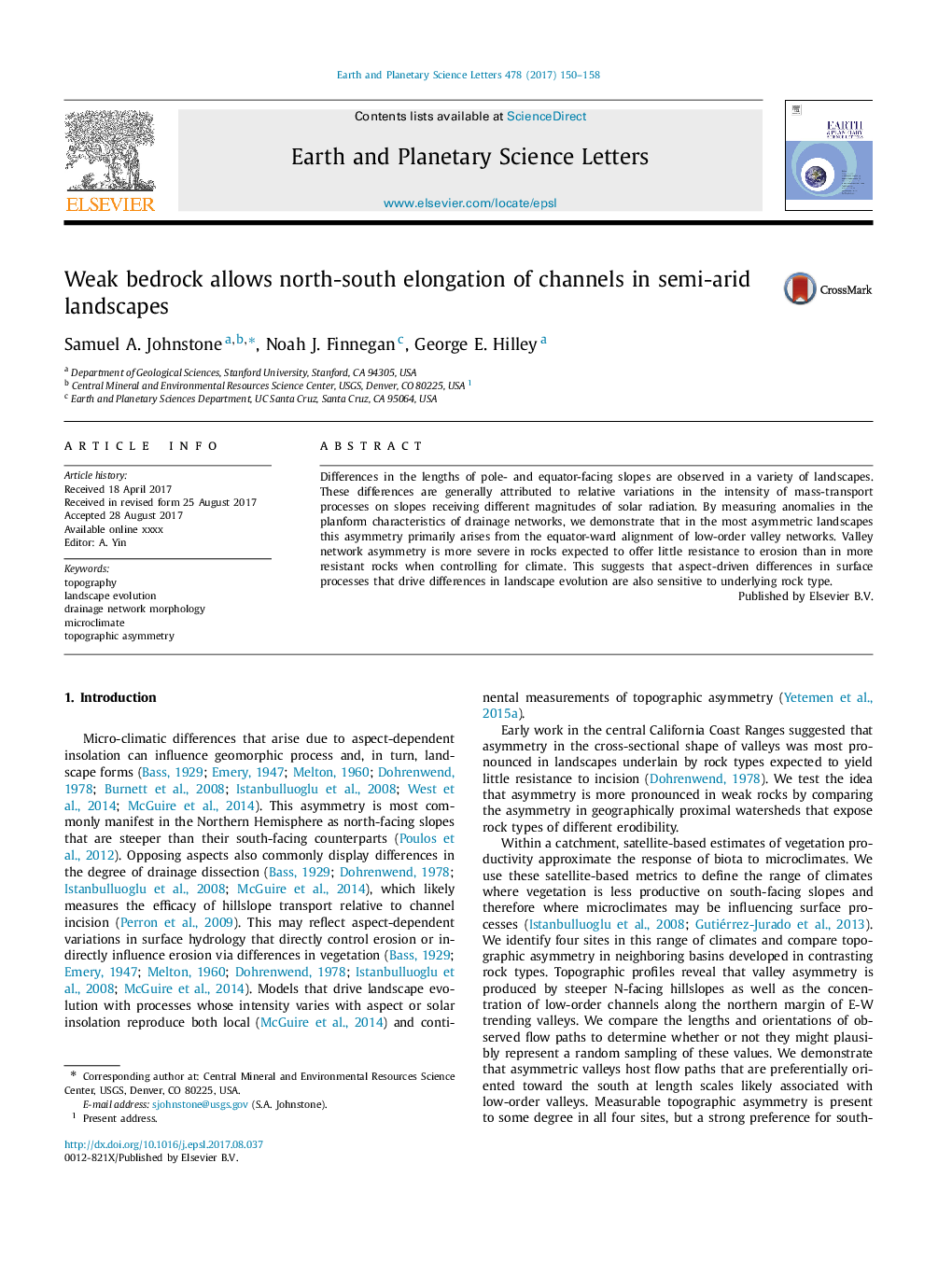| Article ID | Journal | Published Year | Pages | File Type |
|---|---|---|---|---|
| 5779564 | Earth and Planetary Science Letters | 2017 | 9 Pages |
Abstract
Differences in the lengths of pole- and equator-facing slopes are observed in a variety of landscapes. These differences are generally attributed to relative variations in the intensity of mass-transport processes on slopes receiving different magnitudes of solar radiation. By measuring anomalies in the planform characteristics of drainage networks, we demonstrate that in the most asymmetric landscapes this asymmetry primarily arises from the equator-ward alignment of low-order valley networks. Valley network asymmetry is more severe in rocks expected to offer little resistance to erosion than in more resistant rocks when controlling for climate. This suggests that aspect-driven differences in surface processes that drive differences in landscape evolution are also sensitive to underlying rock type.
Related Topics
Physical Sciences and Engineering
Earth and Planetary Sciences
Earth and Planetary Sciences (General)
Authors
Samuel A. Johnstone, Noah J. Finnegan, George E. Hilley,
